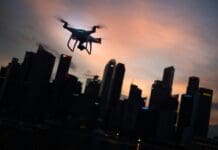This post is also available in:
 עברית (Hebrew)
עברית (Hebrew)
17 years have passed since the 9/11 terrorist attacks, and the global public safety and homeland security market, technologies and industry are forecast to go through major shifts. A new market research report forecasts that the global HLS & public safety market is expected to grow from $431B in 2018 to $606B in 2024, at a CAGR of 5.8% (Compound Annual Growth Rate).
The report Global Homeland Security & Public Safety Market – 2019-2024 was published by the market research firm Homeland Security Research Corp. (HSRC).
Technologies analyzed in the report include border control, big data, CBRN and infectious disease detection, biometrics, C2/C4ISR Systems, counter-IED and explosive trace detection, cybersecurity, emergency communication, video surveillance and analytics, intelligence services IT, personal gear, and more.
According to the report, market growth in this sector will be driven by several factors:
• Terror
• New and maturing technologies, (e.g., UGV, anti-drone systems, artificial intelligence, big data & data analytics, smart sensors, AI-based cybersecurity, 5G, TETRA & LTE emergency communication and AI-based video analytics)
• President Trump’s national security & law enforcement agenda
• Organized crime
• PRC President Xi’s internal security policy
• Cybercrime and cyberterrorism
• The turmoil in the Arab world – the ongoing conflicts in Iraq, Syria and Yemen, and the Shia-Sunni conflict
• An ‘invest whatever it takes’ approach of autocratic and semi-autocratic governments (e.g., Saudi-Arabia, Iran, Egypt, Russia, Turkey) to avoid regime change
• High security spending by governments (e.g., Israel, Brazil, Nigeria) exposed to high risk of terror and/or crime
• Climate warming-related natural disasters growth
As reported by menafn.com, the Asian-Pacific & North American markets will continue to dominate the market, holding together over 50% of market share during the forecast period.
Saudi Arabia, UAE, the US and Israel are the leading countries in terms of market size per citizen.


























